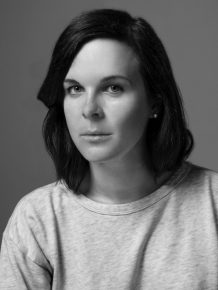
Two Unique Ways to Discover Parliament
Two Unique Ways to Discover Parliament
You can now “visit” the Parliament of Canada both virtually and online, thanks to a new co-production between the Library of Parliament and the NFB.
Parliament: The Virtual Experience comprises two original works that shine a light on Canadian democracy through the famed, historic Centre Block building. Creative director Émilie F. Grenier talked to us about some of the specifics and artistic challenges of the two experiences.
DISCOVER THE ONLINE EXPERIENCE OR DOWNLOAD THE APP ON STEAM OR OCULUS
A two-faceted project
Two years ago, Émilie, a narrative experience designer, was approached with a tall order: conceptualize two works that will allow people to continue to experience Centre Block throughout the 10 years it will be undergoing major renovations. (It has been closed since December 2018.)
“The Library of Parliament came to the NFB’s Interactive Studio to work on creating engaging and immersive virtual visits on a variety of platforms with many levels of accessibility,” Émilie explains. She notes that since VR technology has a very limited audience right now, it was crucial to be able to reach audiences using smartphones and computers as well.
Émilie insisted that the mobile experience couldn’t be a “poor cousin” to the virtual one. “Our goal was to create two projects under a shared umbrella—the soundtrack—but each with their own unique visual and experiential sides.” Although the two projects had the same artistic director and concept team, the timelines were still tight.
“Let’s just say it’s not your old-style CD-ROM virtual tour!” she says, laughing. “I’d describe them as two immersive experiences on the Canadian democratic process, playing out through a building in 2D or 3D.”
Towards a form of magic realism
The projects are designed for people of different generations, with a variety of interests, knowledge levels, and comfort with technology, and this should help them “age well,” Émilie says. “They should be just as relevant in 5 or 10 years, and even beyond that. But how do you create something lasting on platforms that change so rapidly?”

That’s a question the creators of Parliament had to think long and hard about, and they decided to focus on experiences that didn’t aim to replace a physical visit to the Centre Block, but to complement it—even after the building reopens. She says that for both facets of the project, the solution lay in magic realism: “Magic realism lay at the root of all our creative decisions. The realism is the building. It’s the starting point for everything: when we walk into a room, we discover it the way it really is, with all its ornamentation and its sculptures… And then, the building and the walls come to life. That’s the magic part, to help us really discover the building. The virtual reality experience uses colour, and what we call stream of light, while the mobile version relies more on illustration and animation to support the content. You could say we’ve orchestrated a choreography of the gaze.”
For the “realistic” part of the project, the creative team relied on the work of the Carleton Immersive Media Studio (CIMS), a university architecture research group tasked by the government to document the interior of Centre Block in 3D before its renovation. Émilie says, “It was a privilege to work with these researchers and specialists. We were able to integrate points of view we wouldn’t have had access to during a regular visit. Sometimes we even made ourselves float in the air!”
The content provided by CIMS was then adapted and supplemented by the interactive developers at the studio Dpt and by illustrator Stéphane Poirier to create the structure for the experiences, and to “ground the magic.”
“How do we make the walls talk? In a 2D or 3D experience, how can we simulate everything we might feel in the physical space? I think we do it through a sense of wonder.”
Space for voice
The narration for Parliament, which draws on documentation provided by employees at the Library of Parliament, plays a key role in both experiences, serving as a visitor’s guide to the virtual tour. “When we asked ourselves who would be the voice of Parliament, we knew absolutely that it had to be a young woman,” Émilie recalls. She is thrilled with the choice of singer and actor Stéphanie Lapointe for the French version and actress Jeni Ross for the English.
The soundtrack—the common thread in both experiences—was entrusted to composer David Drury, who created it entirely from voices. “After all, it’s called ‘Parliament,’ a word derived from the French word for speech, for voice. David did an incredible job, creating original music with a choir, so that voice could take centre stage.”
The soundtrack for Parliament also includes archival vocal material, combined to evoke the grandeur of the locale. “Parliament is a Gothic Revival building with a very particular feel to it. It’s like the great cathedrals: we can feel ghosts, even if they aren’t there. We wanted to fill the space with voice and to reveal layers of history through the warmth of the human voice.”
Émilie F. Grenier is also the creator of Airplane Mode, an interactive installation that can be experienced at the Musée de la civilisation de Québec until January 31, 2021.



